Saç Ekimi
Hair Transplant
Here at the Long Hair Center, under the ownership of Dr. Ahmet Yildirim, we are committed to providing you with 100% customer satisfaction and global quality treatments. Our services are delivered to the highest level of perfection with personalized, first-rate care tailored to meet your individual needs. Leave your wandering, nervous thoughts behind and experience your desired natural results with confidence. This is our assurance to our valued clientele. We provide the best possible services to our patients, with our undivided attention focused on meeting your personal preferences.
View More
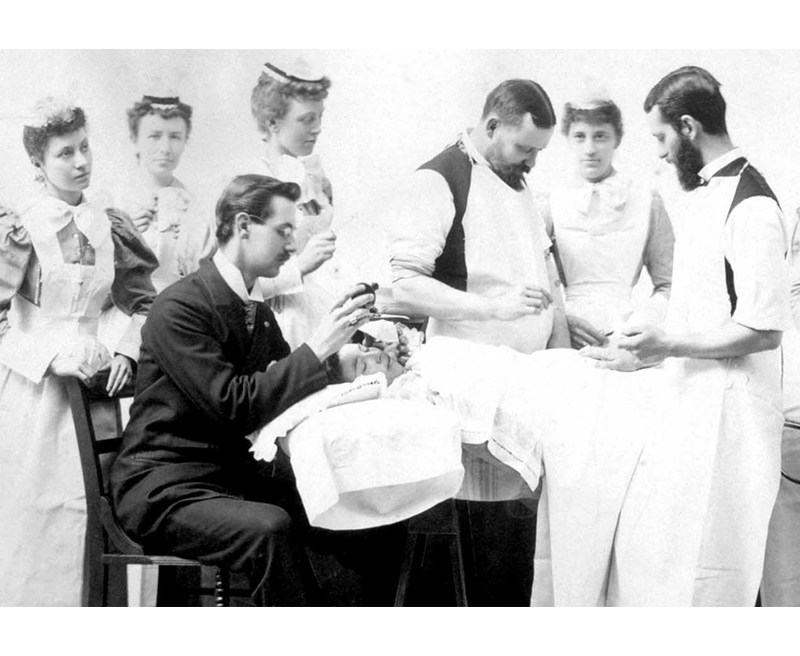
The History of Hair Transplant
Hair transplantation is a field that is constantly evolving with technological innovations. While there is currently no cure for hair loss, hair transplantation offers a permanent solution. The origins of modern hair transplantation date back to the 19th century, when German medical student Johann Friedrich Dieffenbach conducted hair transplantation experiments on animals. In the 1930s, surgical techniques began with eyebrow and eyelash transplants in Japan and evolved into hair transplantation, which spread worldwide after World War II. Modern hair transplantation practices began in the 1950s with the work of Dr. Norman Orentreich in New York. Orentreich demonstrated that transplanted hair continued to grow, marking a significant advancement in the field of hair transplantation. In the 1980s, with the contributions of some Brazilian doctors, techniques were further developed and thousands of hair follicles were transplanted at one time using the microsurgical method of Dr. Rassman of the United States. In the following years, techniques such as Follicular Unit Transplantation (FUT), Follicular Unit Extraction (FUE), and Direct Hair Implantation (DHI) were developed. FUE was introduced to the literature in 2002 by Dr. Rassman and Dr. Bernstein. In 2007, it was transformed into robotic hair transplantation technology by modern doctors and experts. Hair transplantation has become a technology that offers permanent solutions in today's medical and aesthetic fields.
What is a hair transplant?
Hair transplantation is a specialized medical procedure in which hair follicles are taken from a donor area, usually the back or sides of the head, and implanted into areas of the scalp that are bald or thinning. The procedure is meticulously performed by a skilled medical team in a sterile environment to ensure safety and precision.
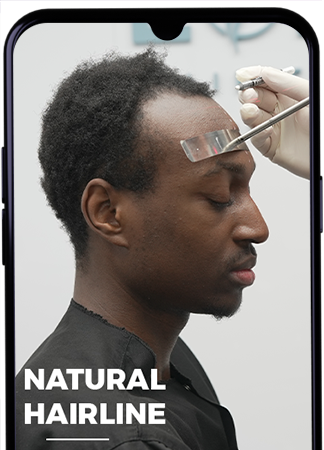
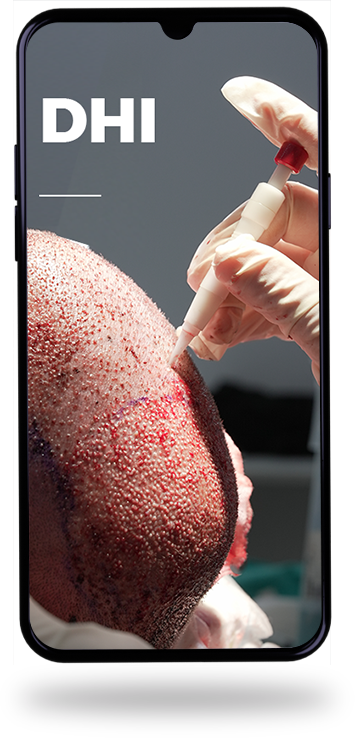
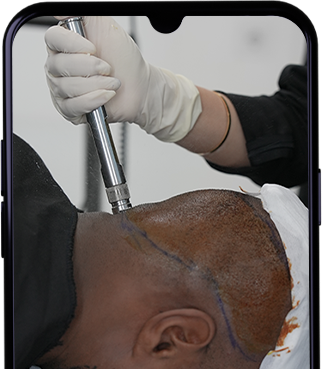
Depending on the size of the area being restored, the procedure can take anywhere from 6 to 10 hours. Careful application of the correct technique is critical to the success of the procedure.Hair transplantation offers significant psychological benefits, as it can restore a person's self-confidence and improve their emotional well-being in social settings. The improved appearance can have a positive impact on a person's personal and professional life, fulfilling not only aesthetic desires but also long-held dreams of hair restoration. While there are several methods of hair transplantation, they all share a common goal: to restore hair in a way that looks natural and permanent.The use of local anesthesia makes the procedure virtually painless, allowing patients to remain awake and comfortable throughout the procedure. Although Follicular Unit Transplantation (FUT) is not the preferred method today, techniques such as Follicular Unit Extraction (FUE) and Direct Hair Implantation (DHI) are widely used. And with modern advancements, recovery times are shorter and results are more natural looking than ever before. This combination of medical expertise, careful planning, and state-of-the-art techniques is making hair transplantation an increasingly popular choice for those seeking to address hair loss.
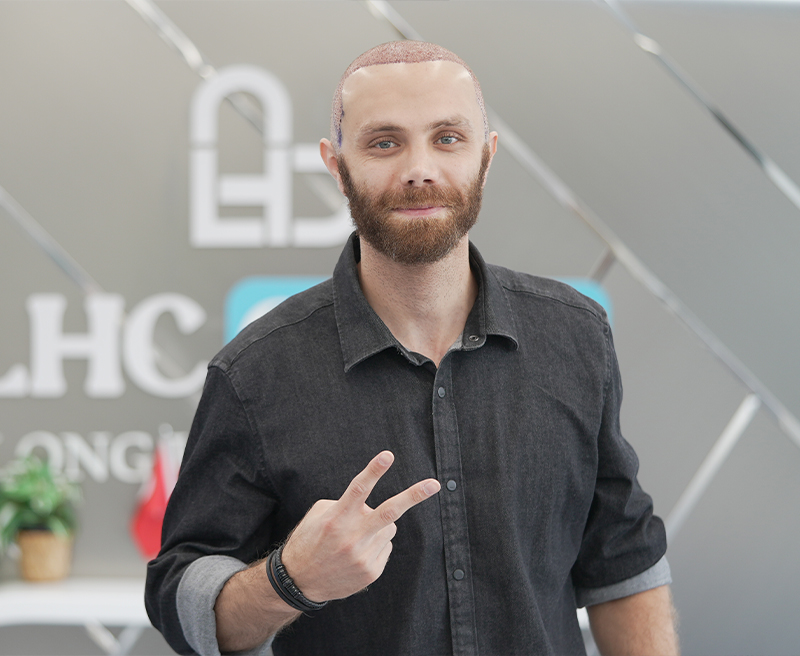
How is a hair transplant performed?
A hair transplant operation should be performed in a hospital environment under sterile conditions by a fully qualified and experienced medical team. There are various techniques for hair transplantation, and the most suitable method depends on individual factors such as age, gender, hair type, the rate and pattern of hair loss, the quality of the donor area, and the level of baldness. The most common techniques include:
- Sapphire FUE
- DHI (Direct Hair Implantation)
- FUE and DHI combo
- FUT (Follicular Unit Transplantation)
- Painless hair transplantation
- Hair transplantation with sedation
Hair Transplantation Stages
- Consultation: Meeting between the doctor and the patient to discuss the details of the procedure. During this stage, the patient's hair loss condition is assessed and information about the transplantation process is provided.
- Shaving: Depending on some factors and the technique chosen, the head may need to be shaved.
- Anesthesia application: Local anesthesia is applied to ensure that the procedure is painless. This helps the patient feel comfortable during the surgery.
- Follicle extraction: Hair follicles are carefully extracted from the donor area using a special micromotor. This step is critical to preserving the health of the follicles and ensuring a successful transplant.
- Collecting the follicles: The extracted follicles are stored in a special solution to maintain their viability and survival rate.
- Opening channels: Channels are created in the recipient area for implantation of the follicles in FUE method. In the Direct Hair Implantation (DHI) technique, this step is skipped because the follicles are placed directly after the extraction.
- Implanting the follicles: The hair follicles are carefully placed in predetermined lines and angles to achieve a natural appearance.
- Preparation for discharge: Once the implantation is completed, the patient will be ready to be discharged.
- First wash: The patient's head gets the first wash the next day after the operation.
- Back to normal: Once you've had your first wash, you can get back to your normal routine but make sure you stick to all the post-surgery instructions.
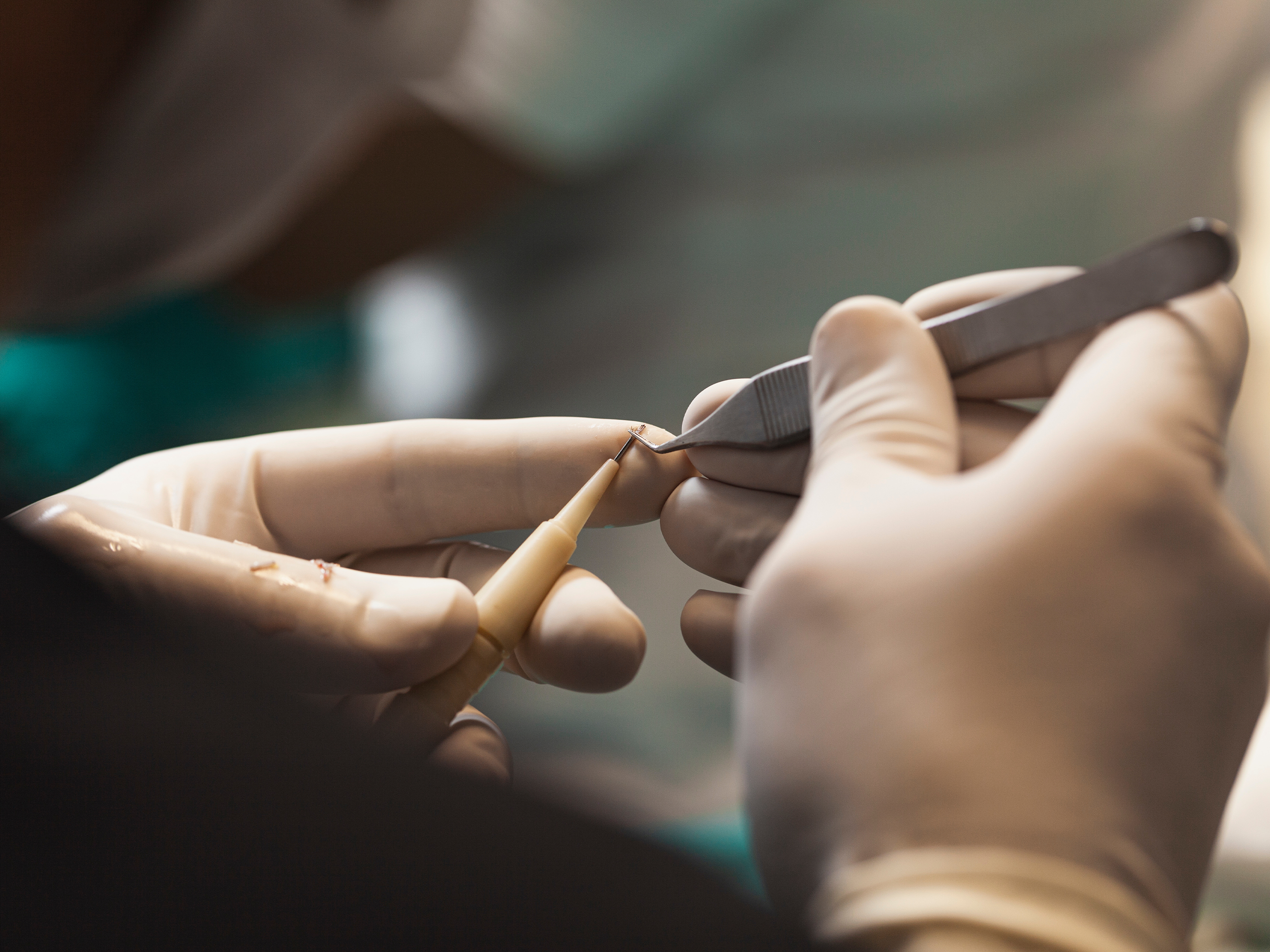
Saç Ekimi
Here at the Long Hair Center, under the ownership of Dr. Ahmet Yildirim, we are committed to providing you with 100% customer satisfaction and global quality treatments. Our services are delivered to the highest level of perfection with personalized, first-rate care tailored to meet your individual needs. Leave your wandering, nervous thoughts behind and experience your desired natural results with confidence. This is our assurance to our valued clientele. We provide the best possible services to our patients, with our undivided attention focused on meeting your personal preferences.
TEDAVİLERİMİZ
TEKNOLOJİLERİMİZ
Saç Ekiminin Tarihçesi
Saç ekimi teknolojik yeniliklerle sürekli gelişen bir alandır. Saç dökülmesinin henüz kesin bir tedavisi bulunmamakla birlikte saç ekimi kalıcı bir çözüm sunmaktadır. Modern saç ekiminin kökenleri, Alman tıp öğrencisi Johann Friedrich Dieffenbach'ın hayvanlar üzerinde saç ekimi deneyleri yaptığı 19. yüzyıla kadar uzanmaktadır. 1930'lu yıllarda Japonya'da kaş ve kirpik ekimi ile başlayan cerrahi teknikler, 2. Dünya Savaşı'ndan sonra tüm dünyaya yayılan saç ekimine evrildi..

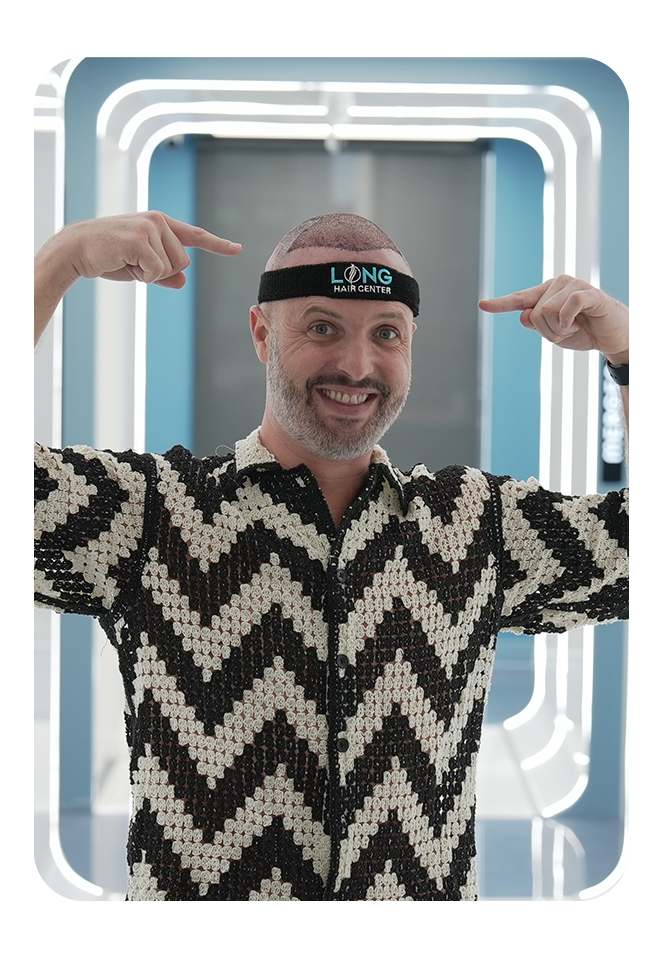
Modern saç ekimi uygulamaları 1950'li yıllarda Dr. Norman Orentreich'in New York'taki çalışmalarıyla başlamıştır. Orentreich, ekilen saçların uzamaya devam ettiğini göstererek saç ekimi alanında önemli bir ilerlemeye işaret etti. 1980'li yıllarda Brezilyalı bazı doktorların katkılarıyla teknikler daha da geliştirildi ve ABD'li Dr. Rassman'ın mikrocerrahi yöntemiyle tek seferde binlerce saç kökü nakledildi.
Daha sonraki yıllarda Foliküler Ünite Transplantasyonu (FUT), Foliküler Ünite Ekstraksiyonu (FUE), Direkt Saç Ekimi (DHI) gibi teknikler geliştirildi. FUE, 2002 yılında Dr. Rassman ve Dr. Bernstein tarafından literatüre kazandırılmıştır. 2007 yılında ise modern doktorlar ve uzmanlar tarafından robotik saç ekimi teknolojisine dönüştürülmüştür.
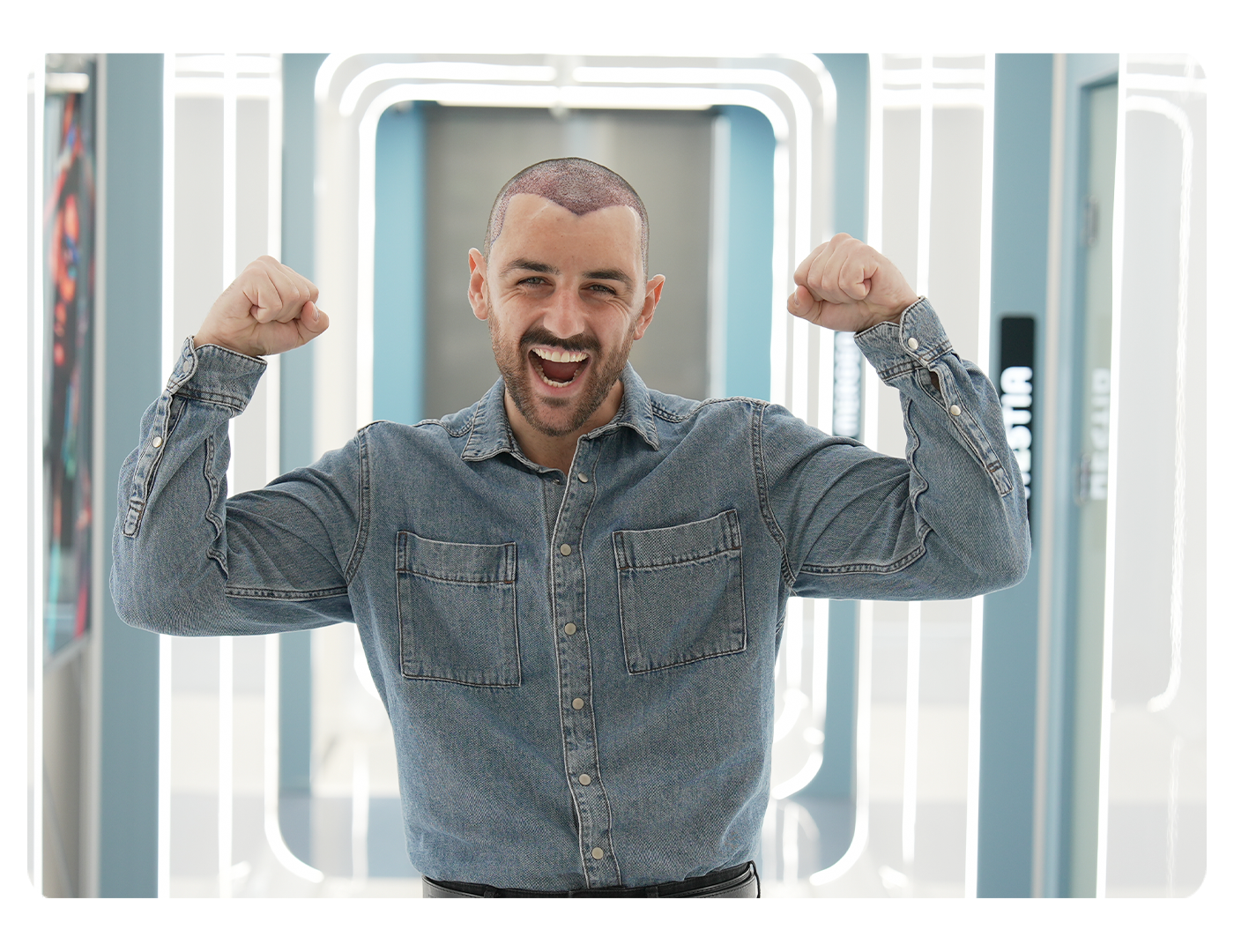
Saç ekimi günümüz tıp ve estetik alanlarında kalıcı çözümler sunan bir teknoloji haline gelmiştir.
Saç ekimi nedir?Saç ekimi, saç köklerinin donör bölgeden (genellikle başın arkasından veya yanlarından) alındığı ve kafa derisinin kel veya incelmiş bölgelerine nakledildiği özel bir tıbbi prosedürdür. İşlem, güvenlik ve hassasiyeti sağlamak için vasıflı bir tıbbi ekip tarafından steril bir ortamda titizlikle gerçekleştirilir. bağlı olarak

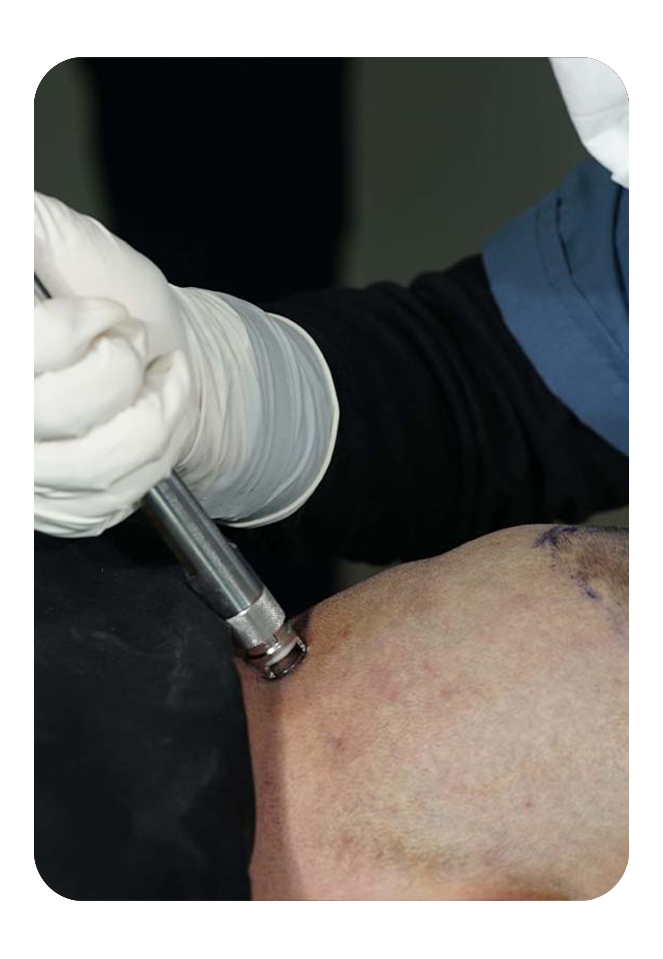
yenilenen alanın büyüklüğüne göre işlem 6 ile 10 saat arasında sürebilir. Doğru tekniğin dikkatli uygulanması işlemin başarısı açısından kritik öneme sahiptir.
Saç ekimi, kişinin kendine olan güvenini geri kazanabileceği ve sosyal ortamlarda duygusal sağlığını iyileştirebileceği için önemli psikolojik faydalar sağlar. Geliştirilmiş görünüm, kişinin kişisel ve profesyonel yaşamı üzerinde olumlu bir etkiye sahip olabilir ve yalnızca estetik arzuları değil aynı zamanda uzun süredir hayal edilen saç restorasyonu hayallerini de gerçekleştirebilir. Saç ekiminin çeşitli yöntemleri olsa da hepsinin ortak bir amacı vardır: Saçları doğal ve kalıcı görünecek şekilde onarmak.
Lokal anestezi kullanımı işlemi neredeyse ağrısız hale getirerek hastaların işlem boyunca uyanık ve rahat kalmasını sağlar. Foliküler Ünite Transplantasyonu (FUT) günümüzde tercih edilen yöntem olmasa da Foliküler Ünite Ekstraksiyonu (FUE) ve Direkt Saç Ekimi (DHI) gibi teknikler yaygın olarak kullanılmaktadır. Modern gelişmeler sayesinde iyileşme süreleri daha kısa ve sonuçlar her zamankinden daha doğal görünüyor. Tıbbi uzmanlık, dikkatli planlama ve en son tekniklerin birleşimi, saç dökülmesini tedavi etmek isteyenler için saç ekimini giderek daha popüler bir seçenek haline getiriyor.
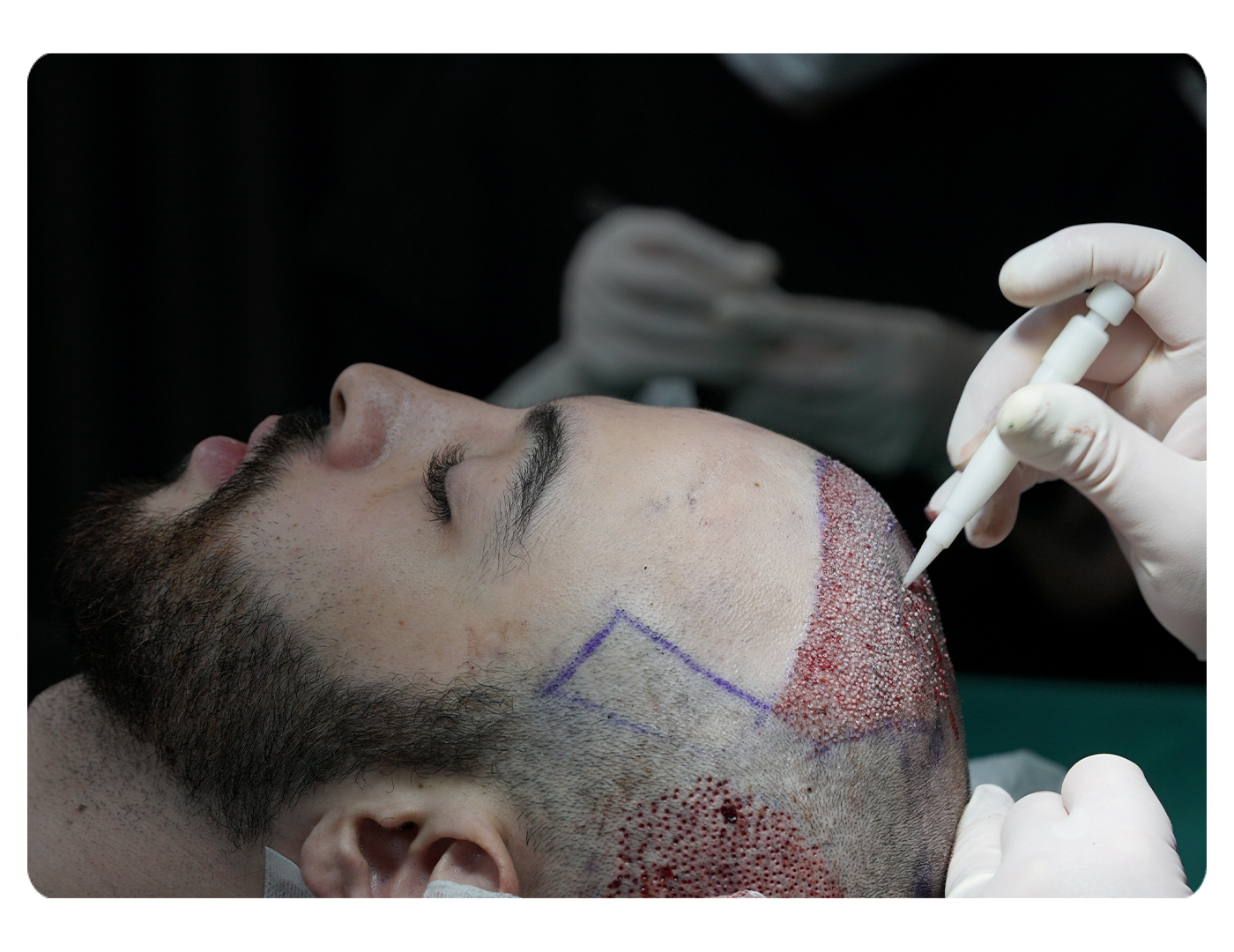
Saç ekimi operasyonu hastane ortamında, steril şartlarda, tam donanımlı ve tecrübeli bir sağlık ekibi tarafından yapılmalıdır. Saç ekimi için çeşitli teknikler vardır ve en uygun yöntem yaş, cinsiyet, saç tipi, saç dökülme oranı ve şekli, donör alanın kalitesi, kellik düzeyi gibi bireysel faktörlere bağlıdır. En yaygın teknikler şunları içerir:
- Safir FUE,
- DHI (Doğrudan Saç Ekimi),
- FUE ve DHI kombinasyonu,
- FUT (Foliküler Ünite Transplantasyonu),
- Ağrısız saç ekimi,
- Sedasyonla saç ekimi
- Konsültasyon: İşlemin ayrıntılarını görüşmek üzere doktor ve hasta arasında yapılan toplantıdır. Bu aşamada hastanın saç dökülme durumu değerlendirilerek ekim süreci hakkında bilgi verilir.
- Tıraş: Bazı faktörlere ve seçilen tekniğe bağlı olarak kafanın tıraş edilmesi gerekebilir.
- Anestezi uygulaması: İşlemin ağrısız olmasını sağlamak için lokal anestezi uygulanır. Bu, hastanın ameliyat sırasında kendini rahat hissetmesine yardımcı olur.
- Folikül ekstraksiyonu: Saç kökleri donör bölgeden özel bir mikromotor kullanılarak dikkatli bir şekilde çıkarılır. Bu adım, foliküllerin sağlığının korunması ve başarılı bir naklin sağlanması açısından kritik öneme sahiptir.
- Köklerin toplanması: Çıkarılan kökler canlılıklarını ve hayatta kalma oranlarını korumak için özel bir solüsyonda saklanır.
- Köklerin toplanması: Çıkarılan kökler canlılıklarını ve hayatta kalma oranlarını korumak için özel bir solüsyonda saklanır.
- Kanalların açılması: FUE yönteminde köklerin ekimi için alıcı bölgede kanallar oluşturulur. Direkt Saç Ekimi (DHI) tekniğinde saç kökleri ekimden hemen sonra yerleştirildiği için bu adım atlanır.
- Köklerin ekimi: Saç kökleri önceden belirlenen çizgilere ve açılara dikkatlice yerleştirilerek doğal bir görünüm elde edilir.
- Taburculuk hazırlığı: İmplantasyon tamamlandıktan sonra hasta taburcu olmaya hazır olacaktır.
- İlk yıkama: Operasyonun ertesi günü hastanın başı yıkanır.
- Normale dönüş: İlk yıkamanızı yaptıktan sonra normal rutininize dönebilirsiniz ancak ameliyat sonrası tüm talimatlara uyduğunuzdan emin olun.
Saç ekimi başından sonuna kadar dikkat gerektiren bir süreçtir. Öyleyse, tüm operasyon dikkatlice takip edilmelidir. Önce ve Operasyon sonrasında aşağıdaki hususlara dikkat edilmelidir:
- Kişinin tıbbi geçmişinin kontrol edilmesi ve gerekli tetkiklerin yapılması
- Ameliyat öncesi talimatları dikkatle takip etmek
- Doğal görünümlü bir görünüm elde etmek ve altın oranı korumak
- Kişinin yaşına ve cinsiyetine göre saç çizgisinin belirlenmesi
- Kişinin ihtiyacına göre ekim veya sıklaştırma yapılacak alanın belirlenmesi
- Kişinin saç çıkış yönüne uygun olarak kanalların açılması ve saçların ekilmesi
- Ameliyat sonrası talimatları dikkatle takip etmek
- Operasyon sonrası dikkatli ve kapsamlı takip Saç ekiminin karşılıklı bir sorumluluk olduğunu unutmamak önemlidir. Her ikisi de doktorun ve operasyonu geçiren kişinin alması gerekenler İstenilen sonuca ulaşmak için özen gösterin ve karşılıklı ilgi gösterin.
Danışma:
Dünyanın her yerinden hastalar saç ekimi için Long Hair Center ile iletişime geçiyor. Bunlar
bağışçı alanlarının resimlerini göndermeleri istendi (burada
greftlerin alındığı yer) ve alıcı bölge (greftlerin yerleştirildiği yer). Uzmanlarımız analiz ediyor
Bu resimler ve bir tedavi raporu hazırlayın
gerekli greft sayısını, gerekli seans sayısını içeren hasta ve
alıcı alanın belirlenmesi.
Saç ekimi operasyonunun önceden kararlaştırıldığı gün hasta merkezimize gelir.
doktorumuz tarafından tekrar muayene edilir. Operasyondan önce
Başlandıktan sonra hastaya işlem ve ne beklemesi gerektiği konusunda detaylı bilgi verilir,
hem sözlü hem yazılı. Ek olarak hastanın
tıbbi geçmişi kişisel dosyasında belgelenir.
Bunun ardından hasta kan testinin yapıldığı ameliyathaneye alınır.
Önce bulaşıcı hastalık olup olmadığını kontrol edin. Bir kez temizlendiğinde,
Bir sonraki adım saç çizgisini belirlemektir. Uzman doktor şunları dikkate alır:
hastanın yaşı, yüz kasları ve altın oran
saç çizgisinin çizilmesi. Hastanın tercihleri ve onayı da dikkate alınır
Bu süreçte dikkate alınması. Daha hassas ve doğal görünümlü bir saç çizgisi için,
milimetrik metre ve lazer cihazları kullanılabilir.
Saç çizgisi belirlenip silinmeyecek şekilde işaretlendikten sonra hastanın donör bölgesi belirlenir.
epilasyon için lokal anestezi yapılır. Lokal anestezi
Uzmanların sedasyon yöntemine tercih ettiği bir yöntemdir. Hem donör alanı hem de
Ekim alanı lokal anestezi ile uyuşturulur.
İşlem sırasında hastanın konforunu sağlayın.
Hastanın cildine ince iğnelerle lokal anestezi uygulanır. Acıyı azaltmak için
Anestezinin yanı sıra ağrısız bir anestezi cihazı da yapılabilir.
etkinleştirilebilir. Bu cihaz, anesteziyi basınçla püskürterek cilt altına enjekte eder.
lokal anestezi yapılmadan önce anestezi yapılacak bölgeye
anestezi uygulanır. Bu sayede lokal anestezi sırasında hissedilebilecek ağrı %80 oranında azalır.



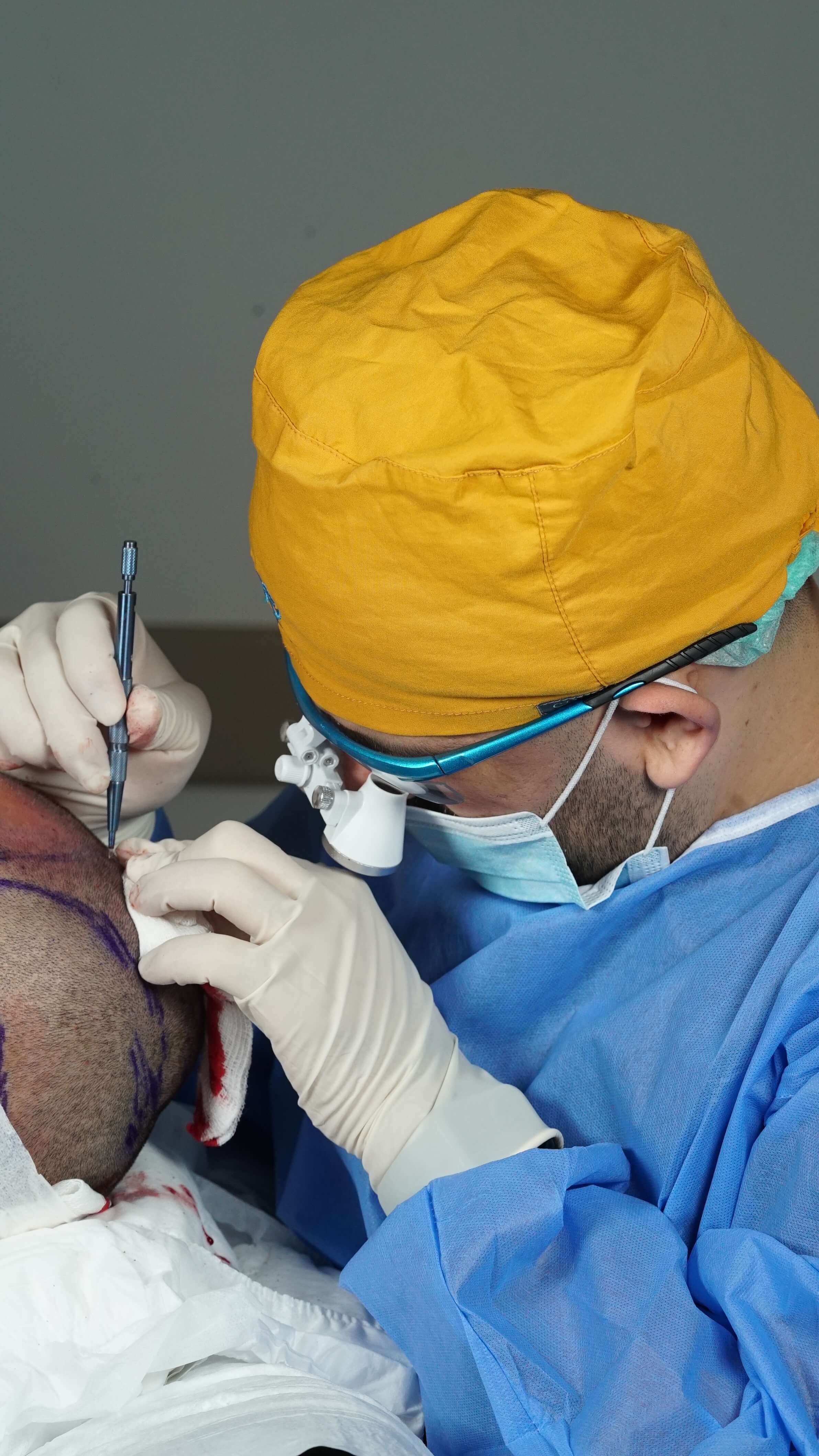
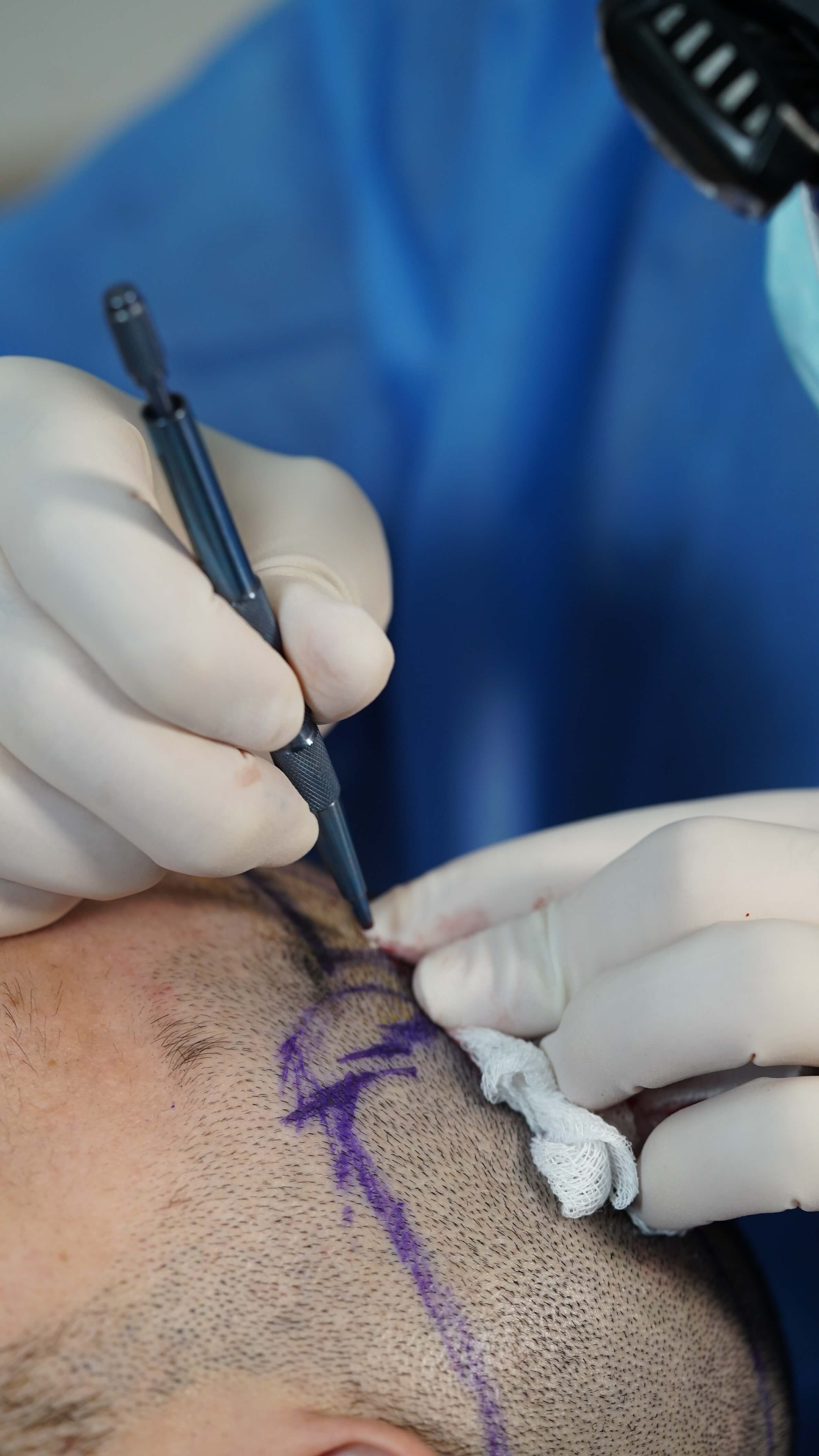
Hastanın operasyonunda FUE yöntemi kullanılmışsa folikül ekstraksiyonu gerçekleştirilir. mikromotor zımbası ve adı verilen cihazların yardımıyla kök kalınlığına ve uzunluğuna göre değişen punchlar. Saç köklerinden sonra Kişinin donör bölgesi doktor tarafından incelenir, Saç köklerinin etrafının oyulması prensibine dayanan folikül çıkarma işlemi kalınlığına göre bir zımba kullanılarak gerçekleştirilir ve saç köklerinin derinliği. Motor hızı doku sertliğine göre ayarlanır donör alanında. Saç kökleri titizlikle alınır homojen hale getirilerek özel bir solüsyonda muhafaza edilir.
Kanalların Açılması (Safir Yöntemi)Saç kökleri alındıktan sonra saçların olduğu bölgeye lokal anestezi uygulanır.
Kanal açılması için nakledilecek. Daha sonra,
Safir uç ile kanallar açılır. Saçın uzayacağı yön ve
Saç yoğunluğu açılan kanallara göre belirlenir.
Kanalların açılması sırasında hastanın mümkün olduğunca hareketsiz kalması gerekmektedir.
Kanal açma işleminde dikkate alınması gereken iki faktör vardır: boyut ve derinlik.
Bu nedenle açılan kanalların uygun kalitede olması gerekmektedir.
Alınan saç köklerinin büyüklüğü; aksi takdirde kökten daha küçük bir kanal zarar verir
Ekim sırasında kök veya daha büyük açılan kanallar
kök doku tahribatına ve yara izine neden olur. Ayrıca saçın bulunduğu derinlik
Bu süreçte folikülün yerleştirildiği bir diğer önemli nokta
faktör. Bu bağlamda kanalın derinliği yeterli su sağlayacak kadar sığ olmamalıdır.
ekilen kök için beslenme. Aynı zamanda
besleme damarlarına zarar vermeden yeterli derinlik sağlanmalıdır. Kanal açılışı
operasyonun en kritik kısmı, bu yüzden öyle olmalı
uzman doktor tarafından gerçekleştirilir.
Eğer operasyon DHI yöntemi ile yapılıyorsa kanal açılmasına gerek yoktur.
Kanallar açıldıktan sonra sıra köklerin ekimine gelir. Yerel
Kanalların açılması için uygulanan anestezi,
hasta bu süre zarfında hiçbir şey hissetmez dolayısıyla ek bir tedaviye gerek yoktur.
Bu adım için lokal anestezi veya anestezi prosedürleri.
Kanallar açılırken beslenen ve güçlenen kökler
özel bir çözüme tek tek yerleştirilir ve
Sabırla, cımbız benzeri forseps kullanarak daha önce açılan kanallara.
Operasyon DHI yöntemi ile yapılıyorsa Choi Kalemine yerleştirilen kökler
doğrudan ekim alanına implante edilir.
Operasyonun sonuna doğru çıkış işlemleri ve hazırlıkları yapılır. Sonra Ekilen kökler son kez kontrol edilir, PRP Plazma işlemi yapılıp, son yıkama işlemi hiç bir şey kalmayıncaya kadar yapılır. kanama veya sızıntı. Dışarı çıkmadan önce kişinin şeker ve tansiyon değerleri kontrol edilir ve her şey kontrol edilir. normaldir, oturur pozisyona getirilirler. Donör bölge bandajlanarak özel antibiyotikli krem ile sarılarak dışarıdan herhangi bir dış etki engellenir. enfeksiyon. Bu bandaj bir gün kalır ve ertesi gün yıkama sırasında doktor tarafından çıkarılır. ve kontrol ediyorum. Ödeme işlemi tamamlandıktan sonra tamamlanır, ilaç tedavisi ve hastaneye yatış pozisyonlarına ilişkin talimatlar açıklanır, garanti belgesi verilmekte ve otele yol tarifi verilmektedir. tedarik edilen.
Sıkça Sorulan Sorular
The hair grafts are extracted from the backside of the head, which we determine as between two ears and above the neck. The reason for choosing this specific area as a donor (extraction zone) is that the hair grafts in this region are genetically encoded against inherent hair fall. If the extraction process from this region is performed with better quality artistry, hair fall will never occur for a lifetime. Therefore, we take the hair grafts from the backside of the head, which we call the donor area.
The hair roots are homogeneously extracted one by one with the help of the latest technology system called the FUE method. After the process is over, the hair will never grow the place taken from since it is taken with its root, but it will not be visible since it is done with cater-corner homogeneously
The hair grafts are extracted from the backside of the head, which we determine as between two ears and above the neck. The reason for choosing this specific area as a donor (extraction zone) is that the hair grafts in this region are genetically encoded against inherent hair fall. If the extraction process from this region is performed with better quality artistry, hair fall will never occur for a lifetime. Therefore, we take the hair grafts from the backside of the head, which we call the donor area.
The hair roots are homogeneously extracted one by one with the help of the latest technology system called the FUE method. After the process is over, the hair will never grow the place taken from since it is taken with its root, but it will not be visible since it is done with cater-corner homogeneously
After the hair transplant has been done, our medical consultant assistant will, without stint, follow the whole process with you until you achieve the best result. We will describe to you the growth process of all the hair grafts, respectively.
1-On the 10th day, the process of cleaning scabs will be done.
2-After one month, implanted hair begins to shed moderately.
3-The implanted hair enters the shock hair loss during the 2nd, 3rd, or 4th month, called the resting phase. During this process, you will face a view as if no hair transplant has been done.
4-At the end of the 4th month, the implanted roots will gradually start to grow progressively, and each month will grow faster and more hair than the previous month.
5-In the 7th month, almost 70% of the transplanted hair ultimately grows.
6-All transplanted hairs may take 12 months for the front zone and 14 months for the crown region to grow
The regrowth period of the transplanted hair may vary from person to person. It is a fact that hair roots come out earlier or later than expected, depending on a person's habits such as smoking, alcohol, drugs, and eating habits.
After the hair transplant has been done, our medical consultant assistant will, without stint, follow the whole process with you until you achieve the best result. We will describe to you the growth process of all the hair grafts, respectively.
1-On the 10th day, the process of cleaning scabs will be done.
2-After one month, implanted hair begins to shed moderately.
3-The implanted hair enters the shock hair loss during the 2nd, 3rd, or 4th month, called the resting phase. During this process, you will face a view as if no hair transplant has been done.
4-At the end of the 4th month, the implanted roots will gradually start to grow progressively, and each month will grow faster and more hair than the previous month.
5-In the 7th month, almost 70% of the transplanted hair ultimately grows.
6-All transplanted hairs may take 12 months for the front zone and 14 months for the crown region to grow
The regrowth period of the transplanted hair may vary from person to person. It is a fact that hair roots come out earlier or later than expected, depending on a person's habits such as smoking, alcohol, drugs, and eating habits.
In hair transplantation, the hair roots are extracted from the entire backside of the head, including above the ears and neck, which we call the donor area. The number of roots is determined according to the volume and quality of the bald area, and the extraction is done homogeneously. Since the extracted grafts from this particular donor area are immune to shedding from birth and are genetically coded against shedding, they do not shed and last a lifetime. Indeed, it is determined according to the knowledge and skills of the doctor who extracts these hair roots in a quality way and performs the hair transplant. Hair grafts are found in the donor region as a triple, double, and single hair. In addition, this grouped form differs from person to person. The important thing is to extract these grouped hair roots without cutting, destroying, and damaging them. People who do not have hair follicles in the donor area, either have been treated for cancer or are struggling with a different disease.
As a result, the transplanted roots never fall out again.
90% of the people who have hair transplants in the Long Hair Center do not have postoperative pain. The reason is that the local anesthesia before the surgery is applied with good quality, which causes less harm to the grafts during the operation. We put pain killer medicins between your medical kit after the operation. However, most of our patients who have hair transplants do not need it.




